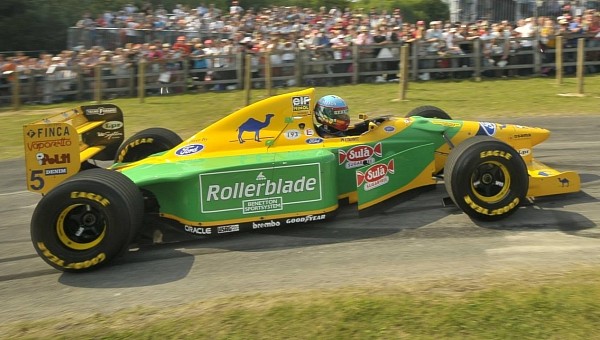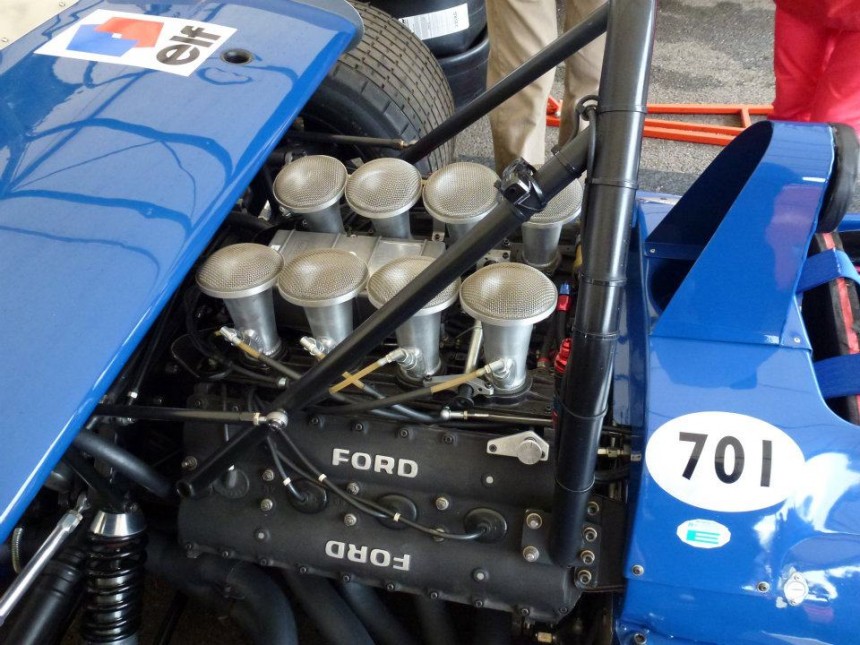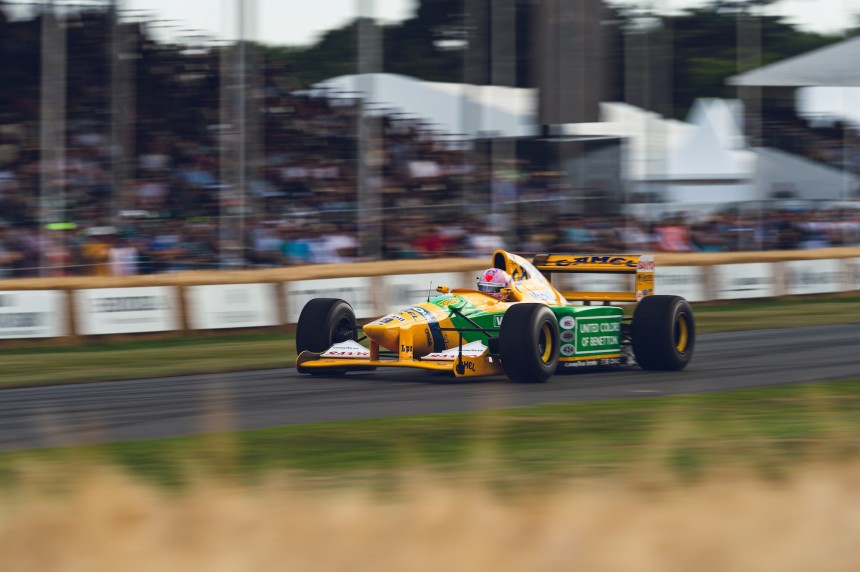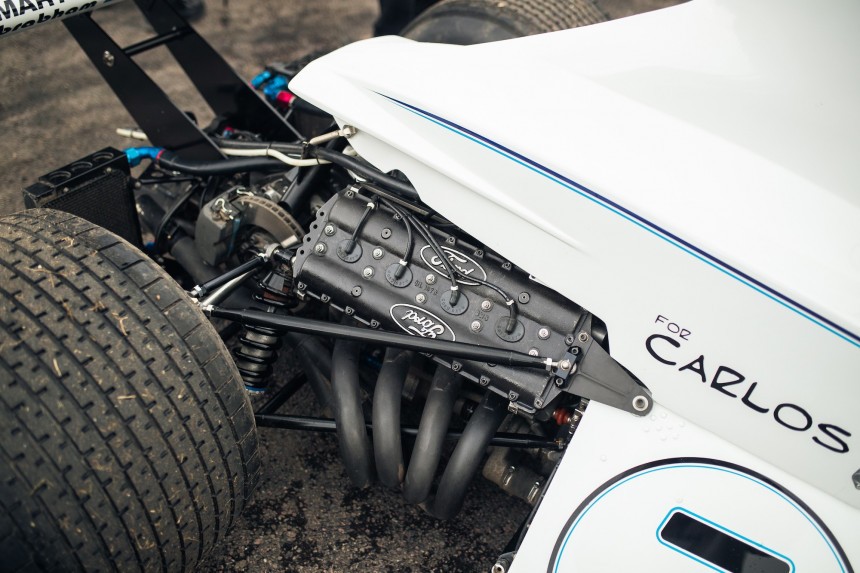Growing up, I was a big fan of Formula 1. I loved watching and hearing the races on TV, and Schumacher's glory days with Ferrari are still strongly imprinted in my mind. For a few years, I was still happy to follow Kimi Raikkonen and his quest for victory, but my interest in the sport was severely diminished with the start of the hybrid era.
I occasionally looked at some highlight videos and read about how things had changed after the sport gave up on the naturally-aspirated V8 engines. But as I became more and more involved in professional drifting at a global level, F1 was no longer that attractive to me. Fast forward to 2020, as the world was facing widespread quarantines, I was stuck at home and getting bored out of my mind. So I decided to give "Drive to Survive" a chance. It brought back a lot of memories, that's for sure.
F1 had had its tough years, but the new management was smart enough to restore its original glory. After following every single race in 2022 and witnessing the developments of the silly season, I am considerably more optimistic about the future of single-seater racing than I was back in 2020. The world was particularly excited to hear that Porsche might be joining the field in 2026. Although we're not sure that will happen anymore, at least Audi has confirmed that it will take to the track by the same year.
Where Porsche failed to reach an agreement with Red Bull Racing, Ford stepped in and sealed the deal. After a long absence from the sport, the Blue Oval is back in business and that kind of news is exciting enough to make the wait worthwhile. If Andretti manages to secure a spot on the grid with Cadillac, that would further up the ante and also attract an even bigger American fan base. But there are still more companies rumored to have taken an interest in the game. Who knows, maybe even Honda and Toyota could join the ranks a few years from now.
But today we will only be focusing on Ford's return to the sport. We've already seen the official presentation of the partnership and a few special videos to celebrate it all. But most young F1 fans aren't even remotely aware of how successful Ford was in the sport back in the good old days. So let's clear that up, shall we? Almost 60 years ago, team Stebro Racing entered the United States Grand Prix at Watkins Glen with a Ford-powered single-seater.
Two Ford-powered cars competed in Formula 1 in 1964, but neither of them managed to score any points. 1965 wasn't any different, but there was light at the end of the tunnel in 1966. Bruce Mclaren finished the United States GP in fifth place, scoring the first point for a Ford-powered F1 machine in the history of the sport. But quite a few more teams were using engines from the American manufacturer, and that was the sign of something big coming up.
We've talked about the Ford Cosworth DFV engines before, but it never hurts to mention that the first big breakthrough happened at the 1967 Dutch Grand Prix. Graham Pill took Pole Position in qualifying for Lotus-Ford, as he was half a second faster than Dan Gurney. But come race day, it was his teammate, Jim Clark, that won the GP. Back then, the closest any Ferrari could get was that of Chris Amon, and he was over 27 seconds slower than Clark.
There were eight more races until the end of the season, and for the first time, Ford had made a powerful statement. Using Cosworth DFV power, Lotus had taken P2 in the Constructors championship. And Jim Clark was third overall, not that far behind Jack Brabham and Denny Hulmes. Of course, this was just a new beginning for the Blue Oval. And all the rival teams and drivers knew there was more to come.
One year later, Ford-powered cars would win all 11 races on the F1 calendar. And the Blue Oval would see a repeat performance in 1973 with 15 victories this time. Despite being out of the games for years and years, Ford has seen tremendous success in Formula 1. We could go on and on about their achievements, but it would be even better if the American manufacturer would come up with a video series to pay tribute to the good old days. Until that happens, let's try to sum up decades of racing around the world by providing some relevant numbers.
The year was 1994, and a young man by the name of Michael Schumacher managed to win the World Championship in his Benetton Ford car. That would be the last global success for the Blue Oval in F1, but just one of many for the German superstar driver. Still, another decade would pass before Ford would completely withdraw from the sport. Giancarlo Fisichella scored the company's last GP victory in a Jordan Ford back in 2003.
And it's incredible to point out that Ford's Jaguar team was ultimately bought by Red Bull. I guess you could say that things have gone full circle given the current situation. In less than half a century, Ford had managed to put its name on 10 Constructor Championship titles and 13 Driver Championships titles. At this point, Mercedes is the only other engine supplier to have won 13 World Drivers' Championships which means it's tied for P2 with Ford. And Ferrari is still the undisputed leader with 15 such victories between 1952 to 2007.
So, following up on the brief history lesson, there's one question on our minds. What does Ford's return to F1 mean for motorsports in the USA? Well, it's certainly a ray of hope for aspiring race drivers and people working in the industry. This move will probably create more jobs in the industry and will also pave the way for other US companies to pay more attention to the world of racing. It's hard to think that we will be getting a fourth Grand Prix in the country by 2026, as three is already a record on its own.
Still, Liberty Media might explore new venues in the USA, and we might even see the development of a new racetrack. While Max Verstappen is tied with Red Bull Racing until 2028, Sergio Perez is only signed until 2024. The question is, will Ford try to bring an American driver onboard to team up with Max? Might they even consider choosing Mick if he is still in the game by then, thinking back on his father's triumph from 1994? All these questions will take time to answer, but the future of F1 looks exciting enough to justify the wait.
The future of F1 is exciting!
Providing a behind-the-scenes kind of perspective, the series managed to reignite a flame within me that was lost for years in a row. In a matter of days, I watched both Season 1 and 2, and I knew I wanted to start following the sport once again. We all know 2020 was a difficult year for the world and, subsequently, for motorsports. But there was one more aspect concerning its future that bothered me. With the increasingly strict emissions regulations and push for electrification, I wondered if motorsports would be all but gone by 2035.F1 had had its tough years, but the new management was smart enough to restore its original glory. After following every single race in 2022 and witnessing the developments of the silly season, I am considerably more optimistic about the future of single-seater racing than I was back in 2020. The world was particularly excited to hear that Porsche might be joining the field in 2026. Although we're not sure that will happen anymore, at least Audi has confirmed that it will take to the track by the same year.
Where Porsche failed to reach an agreement with Red Bull Racing, Ford stepped in and sealed the deal. After a long absence from the sport, the Blue Oval is back in business and that kind of news is exciting enough to make the wait worthwhile. If Andretti manages to secure a spot on the grid with Cadillac, that would further up the ante and also attract an even bigger American fan base. But there are still more companies rumored to have taken an interest in the game. Who knows, maybe even Honda and Toyota could join the ranks a few years from now.
A brief history of Ford's F1 journey
The 1.5-liter engine was only good enough for about 110 hp, a far cry from the performance levels of the competition for that event. Still, with Peter Broeker behind the wheel, the team took P7 overall. BRM dominated the race with Grahahm Hill taking P1 and Richie Ginther in P2. But would you care to guess which teams finished P5 and P6? If you thought Ferrari and Porsche, respectively, you would have been correct.Two Ford-powered cars competed in Formula 1 in 1964, but neither of them managed to score any points. 1965 wasn't any different, but there was light at the end of the tunnel in 1966. Bruce Mclaren finished the United States GP in fifth place, scoring the first point for a Ford-powered F1 machine in the history of the sport. But quite a few more teams were using engines from the American manufacturer, and that was the sign of something big coming up.
We've talked about the Ford Cosworth DFV engines before, but it never hurts to mention that the first big breakthrough happened at the 1967 Dutch Grand Prix. Graham Pill took Pole Position in qualifying for Lotus-Ford, as he was half a second faster than Dan Gurney. But come race day, it was his teammate, Jim Clark, that won the GP. Back then, the closest any Ferrari could get was that of Chris Amon, and he was over 27 seconds slower than Clark.
Ford was a force to be reckoned with
Quite a few big names raced Cosworth-powered machines in 1968 including Mario Andretti and Jackie Stewart. The French Grand Prix was the only one out of a total of 12 races in which the winning constructor wasn't affiliated with Ford. Lotus-Ford, Mclaren-Ford, and Matra-Ford were the top three teams in 1968, with Ferrari finishing in P4. Graham Hill won the championship that year, while Jackie Stewart was just 12 points behind.One year later, Ford-powered cars would win all 11 races on the F1 calendar. And the Blue Oval would see a repeat performance in 1973 with 15 victories this time. Despite being out of the games for years and years, Ford has seen tremendous success in Formula 1. We could go on and on about their achievements, but it would be even better if the American manufacturer would come up with a video series to pay tribute to the good old days. Until that happens, let's try to sum up decades of racing around the world by providing some relevant numbers.
The year was 1994, and a young man by the name of Michael Schumacher managed to win the World Championship in his Benetton Ford car. That would be the last global success for the Blue Oval in F1, but just one of many for the German superstar driver. Still, another decade would pass before Ford would completely withdraw from the sport. Giancarlo Fisichella scored the company's last GP victory in a Jordan Ford back in 2003.
So, following up on the brief history lesson, there's one question on our minds. What does Ford's return to F1 mean for motorsports in the USA? Well, it's certainly a ray of hope for aspiring race drivers and people working in the industry. This move will probably create more jobs in the industry and will also pave the way for other US companies to pay more attention to the world of racing. It's hard to think that we will be getting a fourth Grand Prix in the country by 2026, as three is already a record on its own.
Still, Liberty Media might explore new venues in the USA, and we might even see the development of a new racetrack. While Max Verstappen is tied with Red Bull Racing until 2028, Sergio Perez is only signed until 2024. The question is, will Ford try to bring an American driver onboard to team up with Max? Might they even consider choosing Mick if he is still in the game by then, thinking back on his father's triumph from 1994? All these questions will take time to answer, but the future of F1 looks exciting enough to justify the wait.
















